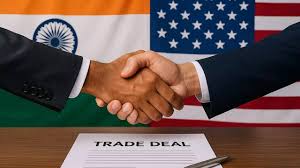Understanding the India US Trade Deal and Its Impact

Introduction
The trade relationship between India and the United States has evolved significantly over the past few decades, highlighted by ongoing negotiations for a comprehensive trade deal. This India US trade deal is seen as pivotal not only for the economies of both nations but also for their strategic alliance, particularly in the context of rising global economic competition and geopolitical tensions.
Current State of Negotiations
As of 2023, India and the US are in advanced negotiations regarding the trade deal, with both nations keen on enhancing economic ties. Recent discussions have emphasized tariff reductions, market access, and cooperation in technology and agriculture. In a recent meeting, US Trade Representative Katherine Tai expressed optimism about reaching a substantial agreement, highlighting the importance of mutual benefit in negotiations. On the other hand, Indian Commerce and Industry Minister Piyush Goyal underscored India’s interest in securing favorable terms that would bolster its manufacturing and agricultural sectors.
Key Areas of Focus
1. **Tariffs and Market Access**: One of the most contentious issues in the trade talks is the reduction of tariffs on key goods, including pharmaceuticals, textiles, and agricultural products. Both countries are assessing which products can be included in tariff cuts to expand trade volumes.
2. **Digital Trade and Technology**: With the global economy becoming increasingly digital, the trade negotiations also include provisions for preventing data localization and ensuring cybersecurity collaborations, which are essential for technology companies in both nations.
3. **Environmental Standards**: Additionally, the deal may incorporate elements addressing climate change, aiming to establish mutual environmental standards to promote sustainable trade practices.
Potential Impacts
The completion of a trade deal between India and the US could result in substantial economic benefits for both countries. Analysts estimate that a comprehensive agreement could lead to a boost in bilateral trade, enhancing opportunities for exporters and job creation in both nations. Moreover, it could serve as a counterbalance to China’s growing economic influence in the region, strengthening India’s position as a global economic player.
Conclusion
The India US trade deal remains a critical issue for both countries, carrying significant implications for global trade dynamics. As negotiations progress, stakeholders from various sectors are watching closely. If successfully finalized, this agreement will symbolize a robust partnership, influencing economic policies and trade practices well into the future. Both nations are hopeful that compromises can be reached, paving the way for a prosperous trade relationship that benefits their economies and enhances strategic ties.









